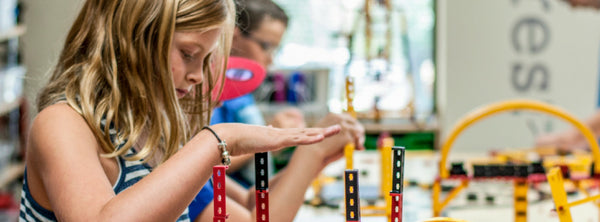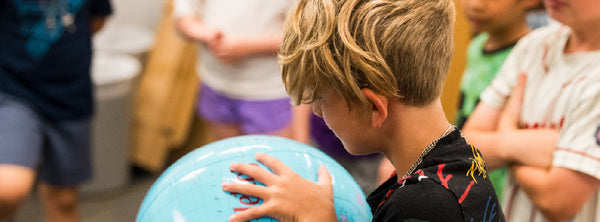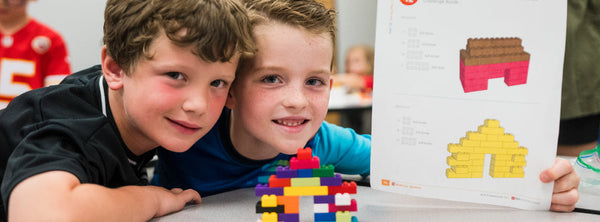
The Science of Roller Coasters

Teaching often feels like a roller coaster—full of exhilarating highs, unexpected turns and moments that keep you on your toes! But have you ever felt that exhilarating rush on a real roller coaster? The breathtaking plummet down a massive drop, the gravity-defying sensation of being upside down? Roller coasters are fun and exciting, but they're also amazing examples of physics, engineering and design.
Whether it's the thrill of a county fair ride or a massive theme park coaster, roller coasters have captured imaginations for centuries! These rides have evolved from their origins in 16th-century Russian ice slides that sent riders down wooden ramps. The first commercially successful roller coaster in the United States, LaMarcus A. Thompson’s Gravity Switchback Railway, debuted at Coney Island in 1884, quickly becoming a national sensation. Today, hundreds of millions of people ride roller coasters annually, showcasing just how much we love these engineered thrill rides.
As STEM educators, we see these machines as real-world classrooms. Let's dive into the science that makes roller coasters so thrilling!
1. Potential Energy: Stored Power
Before a roller coaster moves, it's loaded with potential energy: stored energy, ready to be unleashed.
- How it happens: A chain or cable pulls the coaster up the first, highest hill (the lift hill).
- More height, more energy: The higher the coaster goes, the more gravitational potential energy it builds.
- Why it matters: The first hill is usually the tallest because it stores the most energy for the entire ride.
2. Kinetic Energy: Energy in Motion
Once the coaster crests that first hill and starts its descent, something cool happens. All that stored potential energy rapidly changes into kinetic energy—the energy of motion.
- Speed equals energy: The faster the coaster moves, the more kinetic energy it has.
- The big drop: The first drop is often the most thrilling because it's where the biggest energy exchange happens, powering the rest of the ride.
3. Gravity: The Essential Force
Gravity is the invisible force pulling you toward Earth. On a roller coaster, it's crucial!
- Pulling you down: Gravity pulls the coaster down hills, creating speed.
- Sensations: It helps create those feelings of weightlessness or being pressed into your seat. Every curve and drop is designed with gravity in mind.
4. G-Forces & Inertia: The Thrill Makers
This is where the physics gets truly exciting for riders: G-Forces (Gravitational Forces): These measure acceleration relative to gravity.
- Negative Gs: Feeling like you're floating over a hill? That's negative Gs. Your body wants to go up, but the coaster is falling away.
- Positive Gs: Feeling heavier at the bottom of a drop? That's positive Gs. The coaster pushes you firmly into your seat.
- Expert design: Designers carefully use G-forces to create different sensations throughout the ride.
- Inertia: Newton's first law of motion states that an object in motion stays in motion (and at rest stays at rest) unless a force acts on it.
- Why you get pushed: When a coaster suddenly changes direction (like entering a loop or a sharp turn), your body's inertia wants to keep going in the original direction. This is why you get pushed against the side or restraints.
5. Centripetal Force: Staying Safe Upside Down
How do you stay in your seat when you're upside down in a loop? It's all thanks to centripetal force.
- Inward pull: This force pulls an object toward the center of a circular path, stopping it from flying off in a straight line.
- Tracks provide the force: On a roller coaster, the tracks provide this inward force.
- Speed is key: As long as the coaster moves fast enough, centripetal force keeps you pressed against the seat, even against gravity. It's brilliant physics in action!
6. Friction & Air Resistance: Hidden Players
These forces might not be as dramatic, but they're vital:
- Friction: The rubbing between wheels and the track, and within mechanical parts.
- Opposes motion: Friction works against the coaster's movement. Crucial for safety: While designers minimize friction to keep speed, it is essential for safely braking the coaster at the end.
- Air resistance (drag): As the coaster speeds through the air, it pushes against the air.
- Slows it down: This force also opposes motion and can affect the coaster's speed.
- Engineer's challenge: Designers must consider air resistance when shaping the coaster and track to maintain the ride's speed and thrill.
The Art of the Thrill: Beyond Pure Physics
While the science of roller coasters is fascinating, there's a huge creative component too! Designers don't just calculate forces—they craft an entire experience. This is where STEAM comes into play. The elaborate themes of roller coasters: roaring dragons, ancient ruins, futuristic spaceports or Wild West adventures. These themes are brought to life through visual design, architectural elements, sound effects, lighting and pre-show narratives, all working together to immerse riders and amplify the excitement, turning a scientific marvel into a storytelling adventure.

The Final Ride: Learning and Excitement
Next time you're on a roller coaster, take a moment (if you can!) to appreciate the incredible science and engineering.
Roller coasters teach us about energy transformations, forces and motion in the most exciting way. Understanding these concepts can deepen your appreciation for the thrill of the ride and the brilliant minds who created it.
Engage with Roller Coaster STEM Activities!
✏️ Want to explore roller coaster physics hands on? Try these engaging STEM activities!
- Design Your Own Marble Roller Coaster: Use cardboard tubes or pool noodles and tape to build tracks, exploring potential and kinetic energy as a marble rolls through hills and valleys.
- The "Loop-the-Loop" Challenge: Create a vertical loop with flexible tubing and launch a toy car to see how centripetal force keeps it in the loop and what minimum speed is needed.
- Balloon-Powered Coaster Car: Construct a simple car from recycled materials and use a balloon for propulsion, demonstrating Newton's third law of motion.
These activities are fantastic ways to see the principles of roller coaster physics come to life right before your eyes. Dive in and discover the thrill of STEAM!
What part of roller coaster science do you find most fascinating?
Share your ideas in the comments below.

Author: Carolyn Gilberti
With over ten years experience teaching art and library, Carolyn champions hands-on, project-based learning. Her passion lies in fusing art, technology and science to create powerful connections for learners.










1 comment
this was amazing and an amazing app